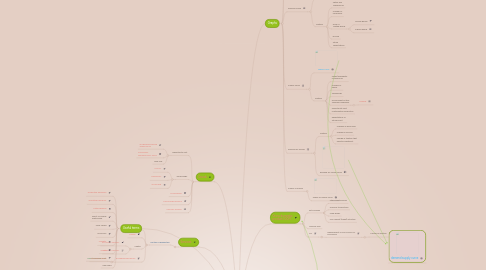
1. what is it?
1.1. Study of SCARCITY
1.1.1. Helping scarcity
1.1.1.1. Centrally planned economics (communism)
1.1.1.2. free market capitalism
1.1.1.2.1. Invisible Hand
1.2. Study of choices
1.3. Macro=large economy as a whole or in basic subdivisions
1.4. Economic goals
2. Goods
2.1. Opportunity cost
2.1.1. All decisions involve TRADE OFFS
2.1.2. CONSTANT OPPORTUNITY COST
2.1.3. New Topi
2.2. Terminology
2.2.1. UTILITY
2.2.2. MARGINAL
2.2.3. ALLOCATE
2.3. SHORTAGES
2.4. CONSUMER GOODS
2.5. CAPITAL GOODS
3. Services
3.1. Factors of production
3.1.1. LAND
3.1.2. LABOR
3.1.3. Capital
3.1.3.1. PHYSICAL CAPITAL
3.1.3.2. HUMAN CAPITAL
3.1.4. ENTREPRENEURSHIP
3.1.4.1. Profit=Revenue-Cost
4. Useful terms
4.1. Productive Efficiency
4.2. Allocative Efficiency
4.3. Ceteris paribus
4.4. Direct vs Inverse relationship
4.5. Price ceiling
4.6. Price floor
4.7. Liquidity
4.8. Assets
4.9. Purchasing Power
4.10. New Topic
5. Supply and demand
5.1. Demand
5.1.1. law of demand
5.1.1.1. why it happens
5.1.1.1.1. Substitution Effect
5.1.1.1.2. Income Effect
5.1.1.1.3. Law of diminishing marginal utility
5.1.2. see graph
5.2. Supply
5.2.1. see graph
5.2.2. law of supply
5.3. Consumer surplus
5.4. Producer surplus
6. Graphs
6.1. Production possibilities curve (PPC)
6.1.1. graph
6.1.2. Assumptions
6.1.2.1. only two goods can be produced
6.1.2.2. full employment of resources
6.1.2.3. fixed resources (4 factors)
6.1.2.4. fixed technology
6.1.3. Shifters
6.1.3.1. change in resource quantity
6.1.3.2. change in technology
6.1.3.3. change in trade
6.2. Circular Flow Model
6.2.1. Product Market
6.2.2. The Resource Market
6.2.3. circular flow model
6.3. Demand Curve
6.3.1. demand curve
6.3.2. shifters
6.3.2.1. Tastes and preferences
6.3.2.2. Number of consumers
6.3.2.3. Price of related goods
6.3.2.3.1. Normal goods
6.3.2.3.2. Inferior goods
6.3.2.4. income
6.3.2.5. future expectations
6.4. Supply Curve
6.4.1. supply curve
6.4.2. Shifters
6.4.2.1. Prices/Availability of resources
6.4.2.2. Number of sellers
6.4.2.3. Technology
6.4.2.4. Gocernment Action: Taxes and Subsidies
6.4.2.4.1. Subsidy
6.4.2.5. Opportunity cost of alternative production
6.4.2.6. Expectations of future profit
6.5. Demand for money
6.5.1. Shifters
6.5.1.1. Changes in price level
6.5.1.2. Change in income
6.5.1.3. change in taxation that affects investment
6.5.2. demand for money curve
6.6. Supply of money
6.6.1. supply of money curve
7. Equations
7.1. Per unit opportunity cost
7.2. Surplus
7.3. Shortage
7.4. Consumer surplus
7.5. Calculating GDP
7.5.1. Real GDP
7.5.2. Nominal GDP
7.6. Producer surplus
7.7. Economic growth
7.8. Consumer Price Index
7.9. Quantity Theory of Money Equation
8. Gross domestic product (GDP)
8.1. not included
8.1.1. Intermediate goods
8.1.2. Financial transactions
8.1.3. Used goods
8.1.4. Non-market (illegal) activities
8.2. Nominal GDP
8.3. CPI
8.3.1. measurement of INFLATION for consumers
8.3.1.1. Causes of inflation
9. Money
9.1. categories
9.1.1. Commodity money
9.1.2. Fiat money
9.2. Functions
9.2.1. Medium exchange
9.2.2. Unit of account
9.2.3. Store value
9.3. Barter system
9.4. types
9.4.1. M1
9.4.2. M2
9.4.3. M3
9.5. Bonds vs Stocks
9.5.1. Bonds
9.5.2. Stocks
9.5.2.1. How stockholders make money
9.5.2.1.1. Dividends
9.5.2.1.2. Capital gain
9.6. Purchasing power
9.7. graphs
9.7.1. Demand for money
9.7.2. Supply of money
9.7.2.1. Monetary policies
